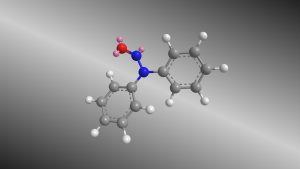Carcinogenic N-nitrosamines in municipal and industrial wastewater
Project in collaboration with Prof. Urs von Gunten (EPFL/Eawag) and the Swiss Federal Office for the Environment
The presence N-nitrosamines in water resources has received considerable attention because of their mutagenic and carcinogenic potential. In particular, N-nitrosodimethylamine (NDMA) was frequently detected in drinking water and wastewater. In the United States, the formation of NDMA is mainly attributed to the use of chloramine for the disinfection of drinking water or wastewater. Apart from the occurrence as a disinfection by-product, nitrosamines can be formed from a range of industrial processes in which amines get into contact with nitrogen oxides, nitrous acid, or nitrite. Krauss et al. have shown that NDMA is the predominant compound among eight N-nitrosamines selected by U.S. Environmental Protection Agency in 21 Swiss full-scale wastewater treatment plants.

The median concentrations of NDMA in a primary and secondary effluents of sewage treatment plants ranged between 5 and 20 ng/L, with peak concentrations up to 1 mg/L. So far the influence of industrial effluents on the N-nitrosamines load in surface water and municipal wastewater remains unclear. Moreover, the origin of N-nitrosamines in industrial wastewater is poorly understood and the occurrence and variability of N-nitrosamine concentrations in industrial effluents have to be better understood in Switzerland. Therefore, further research should be conducted to better assess the role of industrial effluents in the occurrence of N-nitrosamines in surface water and municipal wastewater. The aim of the present project is to answer the following research questions:
1. What are the concentrations of specific N-nitrosamines in industrial WWTP effluents in Switzerland?
2. What is the relative contribution of specific N-nitrosamines to the total N-nitrosamine pool in industrial wastewaters?
3. What is the temporal variability of the specific and total N-nitrosamines concentrations in industrial effluents?
4. Are N-nitrosamine concentrations in industrial effluents correlated to N-nitrosamine peaks in the connected municipal WWTPs?
Contacts: Florian Breider